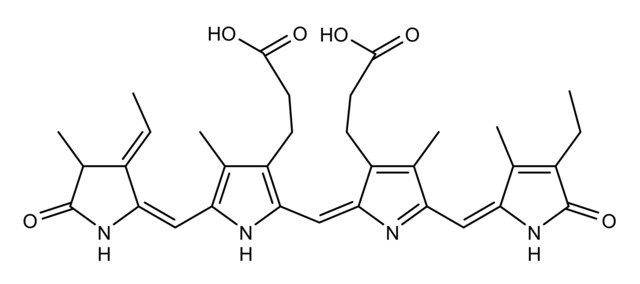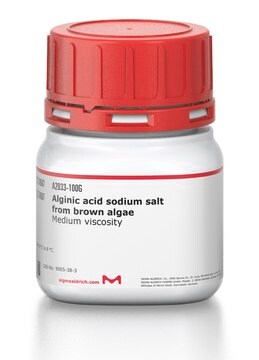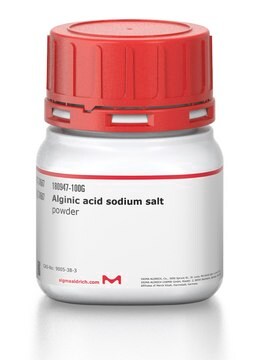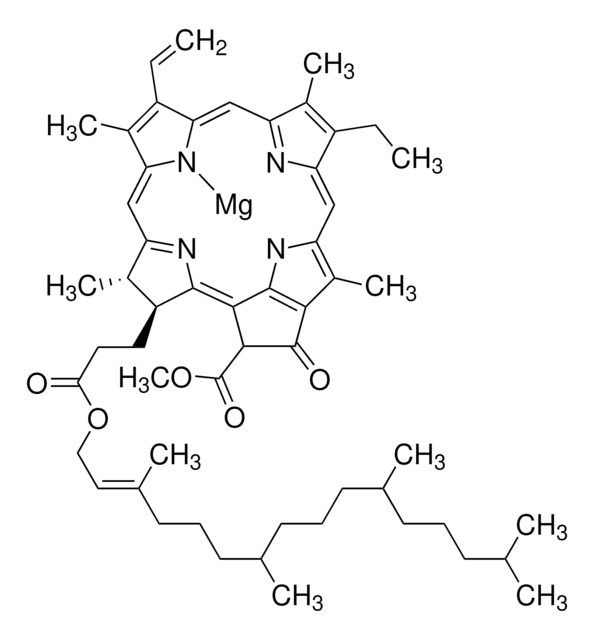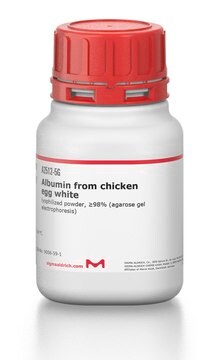A7472
Allophycocyanin
suspension, 4 mg/mL
Sinónimos:
APC
Iniciar sesiónpara Ver la Fijación de precios por contrato y de la organización
About This Item
Productos recomendados
form
suspension
Quality Level
mol wt
104 kDa
composition
Suspension in 60% saturated Ammonium Sulfate and 50 mM Potassium Phosphate, pH 7.0
concentration
4 mg/mL
technique(s)
microbe id | staining: suitable
color
blue
λmax
645-655 nm
application(s)
diagnostic assay manufacturing
hematology
histology
shipped in
wet ice
storage temp.
2-8°C
Application
Phycobiliprotein exhibiting exceptional absorbance and fluorescence characteristics due to a lack of susceptibility to internal and external fluorescence quenching. Ideal for highly sensitive studies in flow cytometry and immunoassays.
Biochem/physiol Actions
Allophycocyanin is a pigment which allows the energy trapped by phycobiliproteins to be transferred to the chloroplast lamellae.
Physical form
4 mg/mL solution in 60% saturated ammonium sulfate and 50 mM potassium phosphate
Storage Class
11 - Combustible Solids
wgk_germany
WGK 3
flash_point_f
Not applicable
flash_point_c
Not applicable
Elija entre una de las versiones más recientes:
¿Ya tiene este producto?
Encuentre la documentación para los productos que ha comprado recientemente en la Biblioteca de documentos.
Los clientes también vieron
Energy transfer in phycobilisomes from phycoerythrin to allophycocyanin.
Gantt E and Lipschultz CA
Biochimica et Biophysica Acta, 292, 858-861 (1973)
Margit Kaldmäe et al.
Protein science : a publication of the Protein Society, 28(6), 1024-1030 (2019-03-31)
Biotechnological applications of protein complexes require detailed information about their structure and composition, which can be challenging to obtain for proteins from natural sources. Prominent examples are the ring-shaped phycoerythrin (PE) and phycocyanin (PC) complexes isolated from the light-harvesting antennae
Erica D'Aguanno et al.
Life (Basel, Switzerland), 5(1), 969-996 (2015-03-21)
How did primitive living cells originate? The formation of early cells, which were probably solute-filled vesicles capable of performing a rudimentary metabolism (and possibly self-reproduction), is still one of the big unsolved questions in origin of life. We have recently
Nuestro equipo de científicos tiene experiencia en todas las áreas de investigación: Ciencias de la vida, Ciencia de los materiales, Síntesis química, Cromatografía, Analítica y muchas otras.
Póngase en contacto con el Servicio técnico
